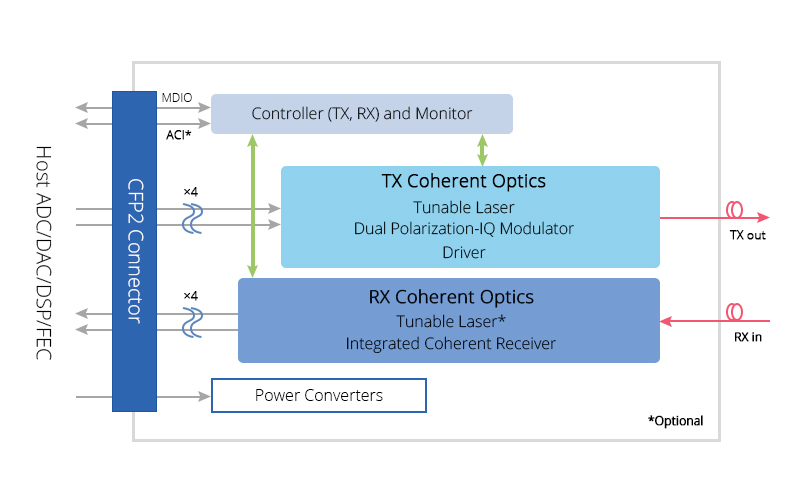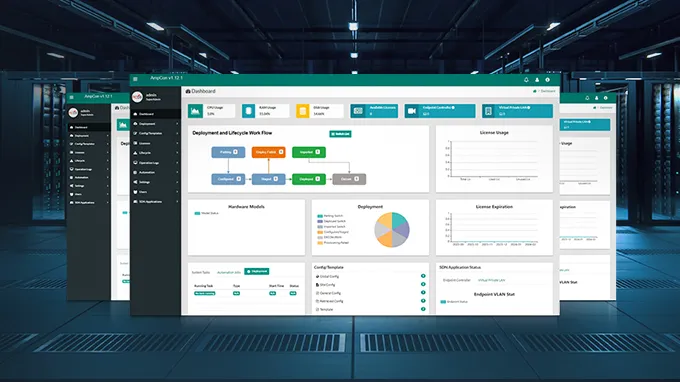Development of the Technologies Applied in 100G Ethernet
Currently, most data centers rely on 10GbE and 40GbE, and these technologies work well for some time. Most people have no issue with 10G or 40G and they feel these speeds are more than enough. But the issue becomes apparent when looking at it from the data center aspect. The traffic growth of enterprise networks and service providers is demanding more efficient and cost-effective technologies to deal with higher bandwidth. This is why 100G Ethernet is mentioned more frequently these days, especially in data center interconnect (DCI) and 100G DWDM networks. Technologies applied in 100G Ethernet are called for a network transmission revolution.
Three Technologies Applied in 100G Ethernet
The major technologies supporting 100G Ethernet interface include the physical layer channel convergence technology, multi-fiber channel and Wavelength Division Multiplexing (WDM) technology. The following will introduce three modules applied in 100G Ethernet: CFP2-ACO, 100G PAM4 QSFP28, and 100G SWDM4.
What Is 100G CFP2-ACO in 100Gbps Ethernet?
CFP2-ACO belongs to the 100G coherent DWDM family. It has no digital signal processor (DSP) in the package but relies on the Host board/card, so its power consumption (less than 12W) is less than the CFP2 form factor. Besides, with analog optical components and a full C-band tunable laser, 100G CFP2-ACO module mainly serves for 100GE Ethernet long-distance data center interconnect/metro.

Figure 1: 100G CFP2-ACO Working Principle
2x 50G & 100G QSFP28 PAM4 in 100G Ethernet
2x 50G QSFP28 PAM4 module combines a pair of 50Gbps wavelengths to create the 100Gbps transmission, filling the gap in the DCI within a distance of 80km. As Cloud data centers move to adopt 100Gbps Ethernet to meet their switching and routing requirements, the high-density, low-latency and low-power DWDM links are on demand.

Figure 2: 2x 50G PAM4 Working Principle
However, the dual laser PAM4 (2x 50G) is not the most optimized solution in 100G Ethernet. The best solution is the single laser 100G PAM4 technology, for its lower power dissipation, higher reliability and lower cost, especially in large-scale deployments.

Figure 3: Single-wavelength 100G PAM4 Working Principle
100G SWDM4 Applied in 100GE Ethernet
Four-wavelength implementation of SWDM is called SWDM4, and these four wavelengths (850, 880, 910 and 940nm) are multiplexed/demultiplexed inside a transceiver module into a pair of MMFs. Each of the four wavelengths operates at 25G and enables the transmission of 100G Ethernet over existing duplex MMF, eliminating the need for expensive parallel MMF infrastructure. 100G SWDM4 optical module can also offer a seamless migration path from 10G to 100G.

Figure 4: 100G SWDM4 Working Principle
100G Ethernet Technologies Development
Apart from the three above 100G technologies, many different types of technologies for 100Gbps Ethernet with various applications have been invented in the market (as the table below).
| QSFP28 | Industry Standards | Max Cable Distance | Optical Connector | Fiber Type to Be Used |
|---|---|---|---|---|
| 100GBASE-SR4 | IEEE 802.3bm, QSFP28 MSA, SFF-8665, SFF-8636, RoHS, CPRI, eCPRI | 100m | MPO-12 | MMF |
| 100GBASE-LR4 | IEEE 802.3ba 100GBASE-LR4, IEEE 802.3bm, QSFP28 MSA, SFF-8665, SFF-8636 | 10km | Duplex LC | SMF |
| 100GBASE-ER4 | QSFP28 MSA Compliant | 40km | Duplex LC | SMF |
| 100GBASE-ZR4 | QSFP28 MSA Compliant | 80km | Duplex LC | SMF |
| 100GBASE-DR | IEEE 802.3cd 100GBASE-DR Specification compliant | 500m | Duplex LC | SMF |
| 100GBASE-FR | 100G Lambda MSA 100G-FR Specification compliant | 2km | Duplex LC | SMF |
| 100GBASE-LR | 100G Lambda MSA 100G-LR Specification compliant | 10km | Duplex LC | SMF |
| 100GBASE-PSM4 | QSFP28 MSA Compliant | 500m | MPO-12 | SMF |
| 100GBASE-CWDM4 | IEEE 802.3ba, IEEE 802.3bm, SFF-8665, SFF-8636, 100G CWDM4 MSA, QSFP28 MSA | 2km | Duplex LC | SMF |
| 100GBASE-4WDM | QSFP28 MSA Compliant | 10km | Duplex LC | SMF |
| 100GBASE-DWDM | IEEE 802.3bm, QSFP28 MSA, SFF-8636, SFF-8024 | 80km | Duplex CS | SMF |
| 100GBASE-BiDi | QSFP28 MSA Compliant | 20km | Simplex LC | SMF |
When combined with DWDM technology, these modules can support longer distances. 100G PAM4 is typically for distances between 40km and 80km. And coherent CFP/CFP2 DWDM optical transceivers are for 100G metro/DCI connectivity more than 80km or a long-haul link more than 1000km.
A Simple Way for 100G Ethernet
Using 100G transponder/muxponder is a simple way to move to 100Gbps Ethernet without changing your present network infrastructure. Transponders are used to enable point-to-point connections over long distances when the client rate matches the optical wavelength. In cases where the client rates are lower than the optical wavelength, a muxponder is used to multiplex multiple sub-rate clients onto the line interface. As data center operators expand their geographical footprint, transponders and muxponders are deployed for data centers interconnectivity. In comparison with other solutions, the 100G transponder/muxponder saves considerable space, costs, and energy.
Importance of 100G Ethernet
If you still think that you can stay well at 10Gbps or even 100/1000Mbps, you’re deemed to be out of the Gigabit game. 100G is rapidly growing in major data centers and will soon take up a large amount of network traffic. Technologies like 100G PAM4 and 100G coherent CFPs applied in 100Gbps Ethernet will enrich your communication with the world more, and in a smoother and easier way.
Key Acronyms:
OFC = Optical Fiber Communication Conference and ExpositionDCO = Digital Coherent OpticACO = Analog Coherent OpticRS-FEC = Reed Solomon Forward Error CorrectionDP-QPSK = Dual Polarization Quadrature Phase Shift KeyingSTM64/OC-192 = A variant of standard 10GbE, with transmission speeds up to 9.510912Gbit/s.
You might be interested in
Email Address

-
PoE vs PoE+ vs PoE++ Switch: How to Choose?
May 30, 2024














